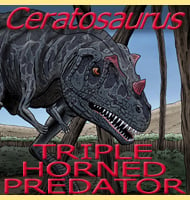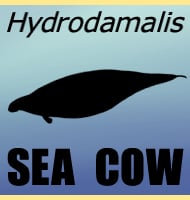In Depth
Callawayasaurus was originally known as a species of Alzadasaurus until Kenneth Carpenter studied the remains and found that they actually represented a new genus. On a related note the type specimen of Alzadasaurus today only exists as a synonym to Thalassomedon and Styxosaurus. Carpenter named the new genus in honour of fellow palaeontologist Jack M. Callaway who is noted for his work on marine reptiles. The species name C. colombiensis means ‘from Colombia’.
Callawayasaurus is particularly noted for its fifty-six cervical (neck) vertebrae that are quite short when compared to other elasmosaurid plesiosaurs. Also, Callawayasaurus has no pectoral bars, a feature shared with the elasmosaurid Terminonatator which lived during the late Cretaceous.
Further Reading
– Revision of North American elasmosaurs from the Cretaceous of the Western Interior. – Paludicola 2(2):148-173. – K. Carpenter – 1999.









